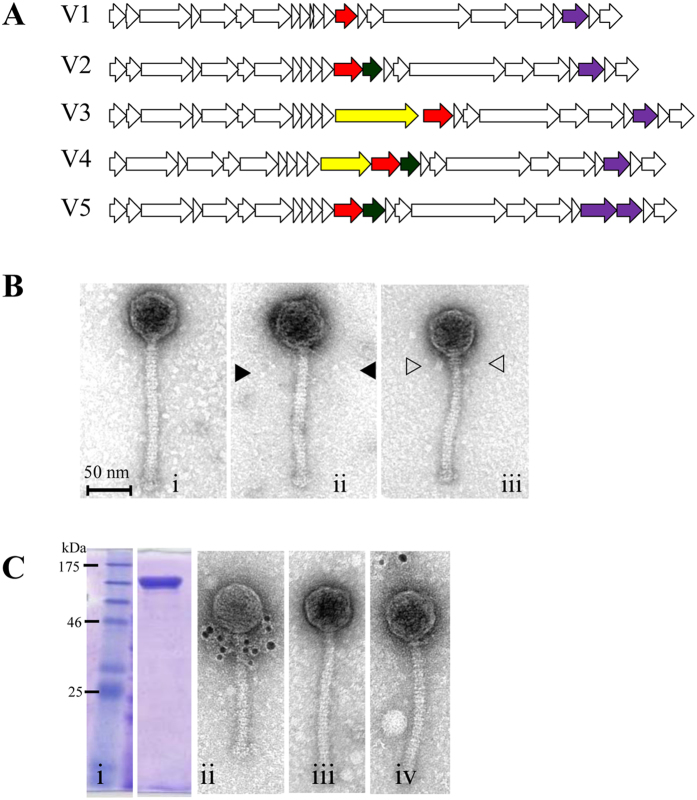Figure 3.
(Panel A) Schematic representation of the five different types of gene arrangements in the structural module of the sequenced phages. V1: no nps or tpeX; V2: tpeX downstream of mtp; V3: nps upstream of mtp; V4: nps gene upstream and tpeX downstream of mtp. V5: tpeX downstream of mtp and secondary rbp upstream of ‘standard’ rbp. Red arrow = mtp; Dark green arrow = tpeX; Yellow arrow = nps; Purple arrow = rbp. (Panel B) TEM of representative 936 group phages highlighting different morphological features: i) Phi16: no additional structures, ii) Phi4: single disc neck passage structure (NPS) with long thin whiskers and small terminal knots (▶), (iii) Phi15: double disc NPS with short whiskers and large terminal knots (▷) (morphotyping determined previously36). (Panel C: i) 12% SDS-PAGE of purified Phi15-NPS. (ii) Micrographs from immunogold TEM analysis of Phi15 labeled with polyclonal antibodies raised against Phi15-NPS confirming that the product of npsPhi15 is located between the phage capsid and tail as predicted. Immunogold labelling was also performed on two phages as negative controls; (iii) Phi17 (without NPS structure), (iv) PhiLj (with single disc NPS and long whiskers).

